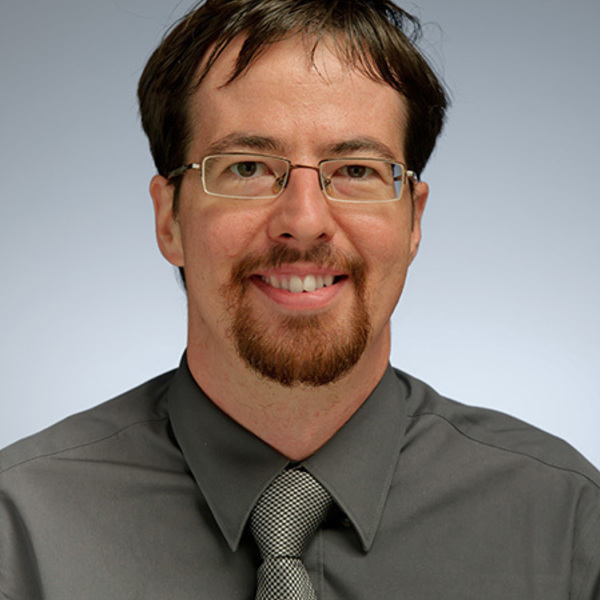Instructors
Kelley Young, Director
Boler Family Director of the Mary E. Galvin Science and Engineering Program
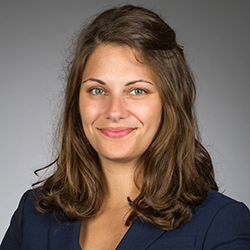
I am an assistant teaching professor and general chemistry coordinator in the department of Chemistry and Biochemistry. I attended Adrian College where I was a member of the women’s soccer team and graduated with a B.S. in Chemistry, earning one of the only bachelor’s degrees among my large, extended family. I earned my PhD in chemistry from Michigan State University where I studied charge transfer properties of thin-film semiconductors for solar water oxidation. After completing my PhD, I was a visiting assistant professor at Hope College before joining the faculty at Notre Dame in 2016.
My research at Notre Dame has transitioned from understanding data from electrochemical measurements to that of student generated data. I am currently working on research utilizing course generated data to better inform how we can help students in the course. As course coordinator, I am continually working to implement evidenced based, best-practices to deliver the best general chemistry course possible.
While I do conduct some research at Notre Dame, teaching is my primary focus. The absolute best part of my job is working closely with students to help them to become the best version of themselves, both in and out of the classroom (while hopefully learning how awesome chemistry is along the way).
I married my high school sweetheart and we have two small children. When I am not wrangling said children, I enjoy hiking, mountain biking, camping, hunting, and working in my flower garden.
Dan Gezelter

I am a professor in the department of Chemistry & Biochemistry and also Associate Dean for Undergraduate Studies in the College of Science. I attended Duke University and graduated with a B.S. in Chemistry and Philosophy. After a year at the University of Cambridge working on NMR spectroscopy, I received my PhD in chemistry from the University of California at Berkeley. I was a post-doctoral researcher at Columbia University, before joining the faculty at Notre Dame in 1999. I have received the Rev. Edmund P. Joyce, C.S.C. Award for Excellence in Undergraduate Teaching and the Shilts/Leonard teaching award in the college of science.
I'm a theoretical chemist, and most of my lab's research involves computational chemistry (and trying to teach computers how chemistry works). The systems I study all involve an interface between a solid and a disordered phase (like a liquid or gas). Right now, we're trying to understand problems like "Why is Ice Slippery?" or "How does heat move out of a nanoparticle?" or "How can we use flowing liquids to separate molecules that are left- and right-handed images of each other?" Figuring out the interesting questions to ask is the most enjoyable part of science!
My teaching is on the physical side of chemistry. I also teach a Mathematical Methods class and a popular Chemistry of Fermentation & Distillation class. The first semester General Chemistry course is an introduction to physical concepts, and for many students it is the first time they will run into challenging concepts like quantum theory, atomic and molecular structures, thermodynamics, chemical equilibrium, and how rapidly reactions take place. Because this is my research area, I'm enthusiastic about this material, and I hope that enthusiasm transfers to my students!
In my spare time, I play the bagpipes, and serve as the faculty advisor for the Notre Dame Bagpipe Band.
Kathryn Mulholland
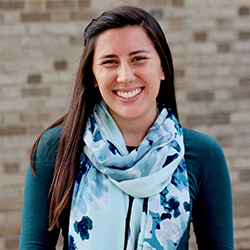
I am an Assistant Professor of the Practice in the Department of Mathematics. I grew up in the San Francisco Bay Area and received a B.S. in Mathematics from Cal Poly in San Luis Obispo, CA. I did my graduate work here at Notre Dame, where I studied the connection between Cluster Algebras and Poisson Geometry.
Outside of academics, I enjoy cooking, hiking, and playing sports. My most recent culinary adventure has been making homemade pasta and my most recent backpacking trip was Denali National Park in Alaska.
Brian Mulholland
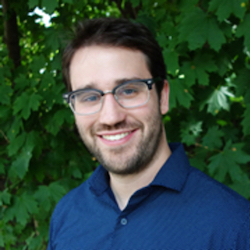
I am an Assistant Professor of the Practice in the Mathematics Department and the Director of the ASCEND program, which is the summer online program for the incoming first years. I work primarily in digital resource development and mathematical pedagogy. In the past few years, I have helped create both the Summer Online Calculus III and Introduction to Linear Algebra and Differential Equations courses. I enjoy implementing digital materials and alternative teaching practices and plans to further research the impact of these non-traditional teaching methodologies to enhance student learning.
As a mission hire with the deNicola Center for Ethics and Culture, I work to support the Catholic mission of the University through my research and teaching. I hope my research in pedagogy can be used to address injustice and create an environment where all students can thrive. Before teaching any class, I reflect on the words of Blessed Basil Moreau, "the mind will not be cultivated at the expense of the heart."
My mathematical research interest is in the mathematics of quantum mechanics, specifically Segal-Bargmann Space and relationships with the different types of Segal-Bargmann transforms.
Eric Riedl
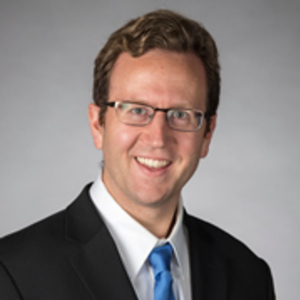
I am an algebraic geometer, interested in birational geometry, rational curves, hypersurfaces, and rationality problems. Specifically, I am interested in studying the geometry of hypersurfaces in projective space by studying the rational curves lying on them.
A motivating theme in algebraic geometry is that the positivity or negativity of the canonical bundle controls the geometry of the variety. There are many important, open conjectures in this vein like the Lang Conjectures and Manin's Conjecture, and an important test case for these conjectures are hypersurfaces in projective space. I study questions such as:
- As the degree of a very general hypersurface in Pn changes, what happens to the dimensions of its spaces of rational curves? There are very precise conjectures about how they should behave, but there remain many important cases where this is unproven (such as Clemens' Conjecture for quintic threefolds).
- Do very general hypersurfaces in Pn with degree d < n contain many rational surfaces? It is suspected that for n large and d near to n, the answer is no, which would provide an example of a rationally connected variety that is not unirational. This would resolve a longstanding open question in birational geometry. An important tool in understanding this question is to understand the normal bundles of these curves, which control the local structure of these moduli spaces.
- What do the entire curves on a very general large-degree hypersurface look like? As d gets to about 2n, there are expected (by the Kobayashi Conjecture) to be none, making these hypersurfaces hyperbolic. However, the current bounds known are multiply exponential in n.
Paul Helquist
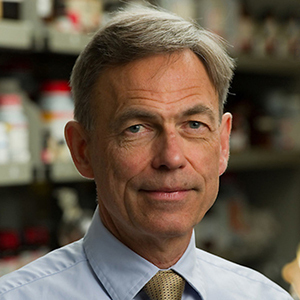
Professor Helquist's research group is concerned with two broad areas: (1) the development of new methods in synthetic organic chemistry, including the preparation, structural study, and applications of new transition metal organometallic complexes as catalysts and reagents for asymmetric synthesis; and (2) the structure, synthesis, mechanism of action, and pharmaceutical development of biologically active compounds including antibiotics and antitumor agents, many of which have their origins as natural products. Often we take advantage of the interface between these two areas by applying some of our new methods, reagents, and catalysts in the synthesis of targeted natural products.
We have developed numerous synthetic methods employing iron, nickel, copper, rhodium, palladium, titanium, zirconium, magnesium, lithium, zinc, and samarium compounds as reagents or catalysts. We have employed many of these methods in the synthesis of complex natural products. Coupled with this organometallic work is the rational design of chiral transition metal catalysts through use of molecular mechanics computational techniques. Through use of this approach, we have succeeded in obtaining metal complexes that can be employed in metal-catalyzed reactions to give products with >99% enantiomeric excess.
In the area of total synthesis, our laboratory studies compounds that show promise of being developed into clinically useful antibiotics and anti-cancer agents. For several of the compounds that we study, the full structures have not been determined previously, and we therefore begin our work by employing high-field NMR and molecular mechanics computational techniques to determine the full, three-dimensional structures of these compounds. In the course of then pursuing total syntheses of these compounds, we often develop new methods. With synthetic materials in hand, we study structure-activity relationships and mechanisms of action. We employ this knowledge to obtain modified forms of the natural products to improve therapeutic properties, leading to the development of new pharmaceutical products. Some of our most recent derivatives are highly potent antibiotics that are active against a range of bacteria that are resistant to other classes of antibiotics.
Maxime Brodeur
My research focus on answering fundamental questions on the inner workings of our universe such as where and how the heaviest elements where formed and is the Standard Model complete? These questions can be addressed through precision measurements, in the field of low energy nuclear physics, of quantities such as atomic masses, and half-life of unstable nuclei. For many years, I have been performing high precision mass measurements worldwide and I also have a local research program devoted to precision measurements of half-lives at the Nuclear Science Laboratory of Notre Dame. My long-term project consists of developing a unique facility at Notre Dame where precision tests of the Standard Model could be performed by looking for minute deviations in the energy spectra of the particles emitted during the radioactive decay of certain nuclides. These measurements will be accomplished with St. Benedict, which will hold radioactive nuclei unimpeded in free space. I have also developed a multi-reflection time-of-flight mass spectrometer, a device that will be used at Argonne National Laboratory to allow, for the first time, the mass measurement of very exotic nuclei of importance for the astrophysical rapid-neutron capture process.
